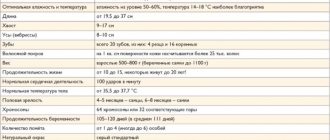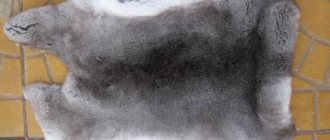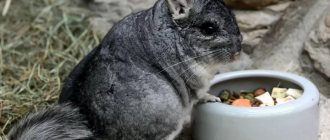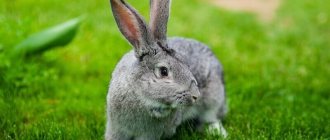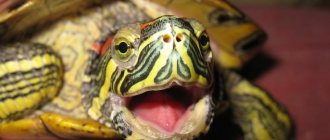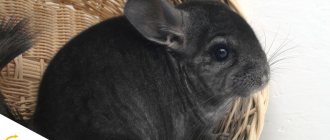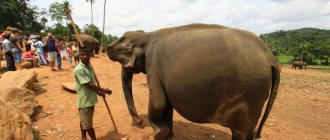The chinchilla breeding business is quite attractive by many criteria and guarantees high profits.
This business is based on breeding animals and selling both them and the most precious fur in the world. A breeding animal can be sold for approximately $100.
To organize a business you will need to answer certain questions. How much do chinchilla skins cost? What is the initial investment and possible profit? We will talk about this and much more further.
To organize activities, you will need to draw up a project that considers all the nuances of the work of the upcoming company. A chinchilla breeding business plan includes the main areas: organizational, financial, legal and others.
Business plan for breeding chinchillas at home
It is quite possible to breed these animals in small quantities at home in a one-room apartment, or in private households. Keeping chinchillas at home for business purposes does not require large areas or special conditions.
Animals do not emit an unpleasant odor due to the absence of sweat and sebaceous glands, and their fur does not shed like other animals. They are very friendly, they do not bite or scratch, they even gnaw their claws on their own. As for the equipment, it includes cages that can be easily made independently or purchased at zoo outlets.
What to consider if you want to get a chinchilla
If you decide to purchase a chinchilla as a family pet, then the purity of its breed, the size of its ears and eyes, and its other external characteristics are unlikely to play a big role for you. If you are faced with a choice: a boy or a girl, then this does not really matter, because, regardless of gender, chinchillas are very calm and balanced animals . Of course, each animal is endowed with its own individuality, and has its own temperament and character.
A chinchilla can live alone in a cage; it tolerates loneliness normally. But in this case, she will demand the attention of her owners. The chinchilla is an intelligent animal that can be trained a little. You can easily teach her to take food from your hands, stroke her neck and belly, and she can sit in your arms. A chinchilla definitely needs to be “educated” if you don’t want to end up with an uncontrollable and impudent animal. When the animal gets used to you, you can let it out for a while to walk around the room. But do not leave him alone unattended, as they pay increased attention to wires, slippers and other things that are “interesting” to them.
Expenses
1. Buying chinchillas. The price of one individual is about 6-9 thousand rubles. For 3-4 females, one male is needed.
2. Equipment. Acquisition of cells. The maintenance area is required to be small in size. Up to 20 animals can freely fit in an area of 2 square meters.
The cells are placed on top of each other, so little space is required.
A cage of 30x40 cm is enough for one animal. They are made independently, to order, or purchased in stores. The cost of a cage can be from 1500 to 10 thousand rubles.
3. Nutrition. In one month, one individual consumes up to 0.7-1 kg of dry food, at a cost of up to 20 rubles per kilogram. It is possible to prepare food yourself, which will significantly reduce costs (hay, dried dandelion leaves).
My farm is still thriving today.
Today my business does not stand still. It moves in the right direction and only goes up. Now I have 400 adult chinchillas. I sell only 600 puppies to my sister for 3,000 rubles each and found another sales place in Omsk, where I sell puppies for 4,000 rubles each.
Now my annual earnings are 4,200,000. If we divide this earnings by 12 months, then my monthly salary is 350,000.
Chinchilla farm.
Some businessmen earn more, but I am a businesswoman who never aspired to have millions, but it just happened that way.
Also read: One eco-fur coat saves 200 chinchillas, or beauty does not always require sacrifice.
Bottom line
Raising chinchillas at home is very profitable and not troublesome. In addition to the fact that they bring very high income, these animals look very beautiful and complement any home. It is more convenient to keep chinchillas in garages or special premises at your own dacha or farm, but at home they, although they will take root, will create a smell and gnaw on everything. However, some even cats behave more aggressively.
In order to delve into the intricacies of keeping, estimate expenses and real income, it is advised to take a couple of chinchillas to a city apartment and watch them for several months. Many of these animals have problems with breeding at home when they do not want to reproduce.
But not with chinchillas - they perfectly produce babies and, depending on luck, can bring not 3-5 newborns, but up to a dozen. This increases the profit and payback of the business almost in the first six months of owning such a farm.
Chinchilla color
The main factor influencing the price is the color of the animal. The natural (standard) color of chinchillas is dark gray. A chinchilla of this color is highly valued if the back and sides have a rich dark color and there is a clearly defined border with a white belly.
The presence of stripes in color can raise the price even higher. But today, many colored chinchillas have been bred, they are bred from four main colors: standard, black velvet, white, beige. They cost an order of magnitude more than standard-colored animals. Because they are hatched in several stages and have a very complex genetic structure. Since their removal is associated with many difficulties and nuances. But when setting the price, many nuances are taken into account, here are the main ones:
- Uniform color in single-color chinchillas.
- The back and sides are uniform and rich in color.
- The back and sides are free of lightening and stains.
Content Features
The chinchilla mini-farm is illuminated using ordinary light bulbs. Heating in winter is electric. Air conditioners are used for cooling in the summer. You can purchase animals using an affiliate program provided by the owners of special farms. There you can order cages and get information on the contents. Actually, what the animal needs: 14-18 degrees, 60% air humidity, sand for swimming, several hundred grams of food per day and a tree with a stone to sharpen its teeth.
What you need to know about chinchillas
Detailed and comprehensive information can be found in thematic books; here, for the sake of familiarization, we will tell you the most necessary things. What you need to know to organize your own chinchilla farm.
These are not the most fastidious animals, but if you need good fur, you need to create a number of conditions:
- ventilation;
- regular cell cleaning;
- maintaining optimal temperature conditions;
- high-quality food (including essential vitamins).
The quality of the fur will depend on all factors; none can be neglected. Also, do not forget that slaughtering, sanding and dressing no less strongly influence the quality of the final product. If you are seriously interested in this business, then you should think about slaughtering animals and further actions with the skins right now. Here you definitely need an experienced person who will at least teach you or your staff how to do it correctly. In addition, for some it is simply a difficult moment from a psychological point of view.
There are three ways to purchase high-quality chinchillas:
- Purchase in Russia from other animal farms. However, it is difficult to find really good chinchillas. We are talking about a large population, and not about a few animals.
- Import from Europe. You can immediately bring a sufficient number of chinchillas. The cost of one animal will be from 8 to 13 thousand rubles (for regions of the European part of Russia).
- Growing your own livestock by crossing the highest quality animals. The method is very long with an initially small number of animals. In addition, it requires fundamental knowledge and experience and is not suitable for beginners.
The first two options remain, each of which has its own disadvantages. In the first case, they will almost certainly try to sell you bad animals. In the second case, chinchillas are difficult to import, especially in modern conditions. However, customs rules regarding the import of animals are a topic for a separate article. But in our opinion, the second option is preferable. The first one should not be excluded either, but we recommend reading all available literature on chinchillas and paying very close attention to the selection of breeding stock.
On average, the cost of one good animal is from 10 to 12 thousand rubles. Count on exactly this amount. Whatever is cheaper is often not very suitable for breeding for fur.
Food for chinchillas and necessary equipment
There are several types of food for chinchillas (let’s say right away that there are usually no problems with purchasing it):
- Feed for main stock. The cost is around 50 rubles per kilogram.
- Food for young animals and pregnant females. The cost is 70 rubles per kilogram.
These are special feeds that contain all the necessary additives (minerals and vitamins). One animal eats about 11 kilograms of food per year. That is, the cost of food for one chinchilla will be approximately 550 rubles.
You also need to know the following facts about these animals:
- Females produce an average of 2 litters of 2 puppies per year. Their pregnancy lasts about 108 days. Retain reproductive functions for an average of seven years.
- Sexual maturity occurs at the age of seven months.
- Animals that are 11–12 months old are slaughtered.
Chinchilla cages
The size of a cage for two animals should be 50–60 by 60 cm, with special requirements for height. It should be at least 70 cm. It is worth installing two or three shelves in the cage. The distance between the rods should not be more than 15 mm, maximum 16–17. For adults, you can make larger gaps, but for newborns, 20 millimeters will be enough to go for a walk.
There are cages of different designs, sometimes even display cases are made of glass and metal. Such structures are easy to clean, but they are quite expensive. The easiest way is to buy ready-made cages for chinchillas. Their cost is from 10 to 15 thousand rubles, which, in our opinion, is too expensive. The optimal solution would be to simply order the cages (or make them yourself), in which case you will have to spend 3-4 times less. When drawing up a business plan for breeding chinchillas and the corresponding calculations, budget an amount of around 5,000 rubles.
Assume that one chinchilla requires an area of at least 0.36 square meters. m. Design the cages according to exactly how you plan to keep the animals. Currently, the most popular scheme is 4+1 (this content is called polygamous). These are four females and one male. Each cage has four cells where females and their young live. In addition, the passages to these cells are usually equipped with barriers (females can sometimes show aggression towards the male).
The cells will also require:
- Bathing suits that are necessary for animals. Firstly, they feel comfortable, and secondly, their fur is always clean and beautiful. The cost of one is from 400 to 500 rubles.
- Automatic drinkers. Cost from 200 to 300 rubles.
- Bunker feeders. Cost from 400 to 500 rubles. There are different designs, but in this case the difference is not fundamental.
Thus, you should first calculate the cost of a cage for keeping five chinchillas in the region of 6,500 rubles.
Room
Chinchillas are unpretentious animals, but for their successful breeding it is highly desirable to maintain certain conditions:
- air temperature 20 °C (deviation of 2-3 °C is allowed);
- air humidity around 60%;
- absence of direct sunlight and drafts.
There are no other special requirements. The premises can be rented, or you can build them on your own summer cottage (many do this). Some manage to keep chinchillas in an apartment by making shelves with cages that resemble ordinary cabinets, but this is a very controversial decision. Firstly, it will not be possible to keep a large number of animals (if we are talking about breeding chinchillas for fur). Secondly, living with these animals will not be very comfortable. They are nocturnal and in large numbers simply will not let you sleep. There are also sanitary considerations. And the neighbors may not be happy.
Therefore, the only options remain to rent premises in a non-residential building or build your own. If you have land (and electricity), then you should definitely choose the second option. Yes, in this case the initial investment will increase, but in the long run it will be much more profitable.
Equipment for the premises
Air conditioning and heating systems are required. The latter is often chosen as convectors that do not burn oxygen in the room. Calculate the cost based on the area of the room. On average, for 50 sq. m. you will have to spend 30–35 thousand rubles.
Large chinchilla farms, which are located in separate premises, always have generators in case of power outages. If in summer it is quite possible to do without this (these animals can feel comfortable at temperatures up to 40 ° C), then in winter serious problems can arise. Therefore, they also install an alarm system that notifies about problems with electricity.
When building a farm, there is often a desire to save on such trifles, but we do not recommend this. When working with living organisms, such savings can be fraught with huge losses.
Basic costs
1. Premises.
For 250 heads - a space of no more than 30-50 square meters (per 1 sq. m - 12 cells, if arranged vertically).
Options:
- when purchasing premises, the amount is paid one-time;
- when renting - monthly;
- own territories (dacha, private outbuildings) - absolutely free.
2. Purchase of animals - 250 heads (200 females and 50 males) about 1-1.5 million rubles.
3. Feed costs – 50,000 rubles per year.
4. Equipment – cages, accessories. For a wholesale order, the cost will not exceed 100,000 rubles.
5. Staff salary - 100,000 rubles. in year.
Let's calculate my income
In total, I spent 800,000 rubles on opening and developing the business. I have been in my business for 10 years and have fully returned the money.
I have been receiving an income of 2,650,000 per year for 10 years. That is, I have already earned 26,500,000 rubles on my farm. From this money we subtract the funds spent in the amount of 1,000,000 rubles. The result is an exhaust amount of 25,500,000 rubles.
As I said, having worked on my farm for 10 years, I have never regretted it and I am very happy with my earnings. I'm thinking about increasing the price of puppies to 4,000 per puppy. Chinchillas have different prices in different areas; you can sell them where they are more expensive. The price for three-month-old chinchillas ranges from 3,000 to 5,000 rubles. You just need to find a place to sell and make a good profit.
Profit
The estimated cost of 1 animal is from 6,000-10,000 rubles. and higher, when selling for exotic purposes - from 10 to 30 thousand rubles.
From the volume of animals that 200 females produce, you can get 10-18 million rubles a year. When selling for exotic purposes, the profit will increase to 60 million. The cost of 1 chinchilla skin in the finished product reaches $1 thousand.
Products for sale:
- Live chinchillas for breeding.
- Skins and fur products.
- Chinchilla meat.
- Live chinchillas as exotic animals and a fashion element.
My chinchilla farm is already 10 years old
Hello dear readers. My name is Elya. I am 45 years old. I live in the Saratov region in the village of Krasnaya Polyana. My chinchilla farm turned 10 years old this year.
How did I find this way to make money?
My cousin lives in the Moscow region, and she breeds chinchillas. She got involved in them to sell the skin, because it is very expensive and in great demand. She invited me to buy 10 chinchillas from her and start breeding them so that I could sell her one-month-old chinchillas. She, in turn, kept them until the required age, and they were slaughtered to sell skins and meat. Without hesitation, I agreed, because at that time I was unemployed and I really needed money.
Search for buyers
Who is the target audience for this business?
- The main buyers can be both existing farmers in the fur market and new entrepreneurs who want to form this direction in their own city. The search is carried out by offering products through the website and advertising. Direct commercial offers for the sale of individuals are also appropriate.
- Functioning pet stores selling such animals.
- City residents purchase animals for exotic purposes as a tribute to fashion. Attraction through advertising in the city. The income is the highest.
- Factories for sewing fur products and selling fur directly.
- Cafes, restaurant complexes, sellers of meat products - when selling meat.
Brief overview of the market
The exact numbers are unknown, but as of 2022, there was one large industrial enterprise, as well as just over a hundred small ones. But if we talk about fur, then most of these small enterprises should not be considered as competitors. The fact is that many people breed chinchillas solely for the purpose of selling live animals.
At one time there was a popular scheme that worked approximately according to the principles of network marketing. The idea was simple: raise animals and sell them to other farms that are just starting out. Of course, such enterprises had no long-term prospects.
The demand for chinchilla fur in Russia is much higher than the supply. But it’s worth making an important caveat: high-quality fur. Low-quality skins are in great demand in Russia (products made from them are much cheaper), but if we talk about the top segment, then this is in less demand. There are two reasons:
- in the studio, the highest quality skins are usually purchased only for specific orders;
- Fur products made from top category chinchilla fur are often preferred to be purchased from European manufacturers.
But in any case, it is better to focus on high quality skins. Even if in Russia the level of supply catches up with the level of demand (which is still a long way off), then farm products can always be sold to European countries.
Bottom line
A chinchilla breeding business plan is undoubtedly quite easy to implement and incredibly profitable. This idea is excellent for starting your own business.
This activity is very easy, simple and does not require huge investments. Mega-high income (400-600%)! Just pay attention to how much chinchilla skins cost. The business involves implementing activities both at home and in the most large-scale way - by setting up a mini-farm. Costs for organizational issues are one-time, and the life expectancy of chinchillas (fertility) is up to 15-18 years. Business involves expansion.
Today it is difficult to find any area with such a huge income and such minimal investment. Undoubtedly, this is a very profitable business! One can only guess why it is very poorly developed in Russia, and the niche is still free.
Difficulties and their solutions
The chinchilla is a very clean animal and demanding in care, food and maintenance. Here are a few difficulties that you may encounter, and in parentheses the solution to the problem.
- Animals take a long time to adapt , they are afraid of people (the first 10 days they get used to new conditions, this is a normal phenomenon. You just need to provide them with water, food and dim the lights . Leave them alone while they adapt);
- They eat poorly and do not grow (perhaps compound feed is not suitable for them, give more hay and change the food to another. Buy a specialized grain mixture for chinchillas );
- The mating is unsuccessful (this means that the chinchilla has not yet grown to childbearing age. And if you do not understand when a chinchilla comes into heat, give the boy access to all chinchillas . He will run around the cages and fertilize all the chinchillas that come into heat);
- Puppies die (lack of milk from the mother; when 4 puppies are born, some of them are born weak or underdeveloped, this is considered normal. And if puppies die in all chinchillas at about the same time, there is a risk that there is an infection on your farm. B In this case , all chinchillas need to be transplanted and the cells must be thoroughly disinfected and the sawdust changed );
There seem to be few difficulties, but they exist, and they need to be solved as necessary.
We advise you to read: How to earn 1,000,000 rubles on your own land in a village where there is no work.
Description of the animals: external characteristics
These are herbivorous animals whose homeland is South America. They reach sexual maturity at 7-8 months of age. Pregnancy lasts for 3.5 months. Babies are born fully prepared for active development:
- with eyes open;
- with teeth;
- covered with wool.
At two months, puppies are already separated from their mother.
The animals have soft fur of different gray-blue colors, which does not harbor parasites, round ears and a long tail. Animals don't smell because they don't sweat. They live up to 20 years in captivity. The weight of an adult individual is from 600 to 700 g. Cubs at birth weigh 60-70 g. Chinchilla, the breeding of which does not require large investments and efforts on the part of the entrepreneur, can bear 2-3 litters per year with abundant feeding and proper maintenance of females, sale which will allow you to recoup all costs for the purchase of animals, materials for cages, food and bedding in the first 12 months. This is a nocturnal animal that does not make sounds.
Content
This is a heat-loving animal that lives in the dry climate of the highlands of South America, so the easiest way growing chinchillas
- temperature range from +18 to +20 degrees;
- humidity level 50%;
- protection from direct sunlight;
- low illumination of the cage space.
They eat grass and insects once a day in the evening. For proper maintenance, they only need to create the proper conditions once and feed and change the water once a day.
You will also need to clean the cage every day. Cleaning the cells will not cause discomfort and require much effort. The animals do not smell; the sand in which they bathe needs to be changed once a month. The bedding is changed once a week.
A family of one male and one female can live on one square meter. Also, at the first stage, you can create a family of two females and one male.
The animals are fed balanced granular food, which is sold in pet stores, as well as carrots, apples, fresh or dried herbs. When living in apartments, you need to regularly give vitamin complexes to support the immune system.
Sales of chinchilla skins
The main clients will be fur studios in big cities. In small towns it will be very difficult to find buyers. An alternative could be fur auctions, which are held, including in Europe. By the way, the demand for them is often twice as high as the supply. In practice, there are no problems with the sale of good chinchilla skins. You can also search for buyers on thematic resources, for example, on the website rosmex.ru.
There are also the following ways to sell not skins, but live animals:
- Unsuitable (culled) animals are sold to private individuals or sold to pet stores. There is no point in keeping them, and if there are no buyers, then they should simply be euthanized (based on economic feasibility). Be prepared for the fact that you will have to cull quite a lot of animals. On the other hand, this will allow you to obtain only high-quality fur. This is called "breeding work."
- Sale of breeding animals. We wrote prices: from 10 to 12, in some cases, 15 thousand rubles. The buyers are other farms. It’s 2-3 times more profitable than selling skins, but you shouldn’t count on constant demand here.
